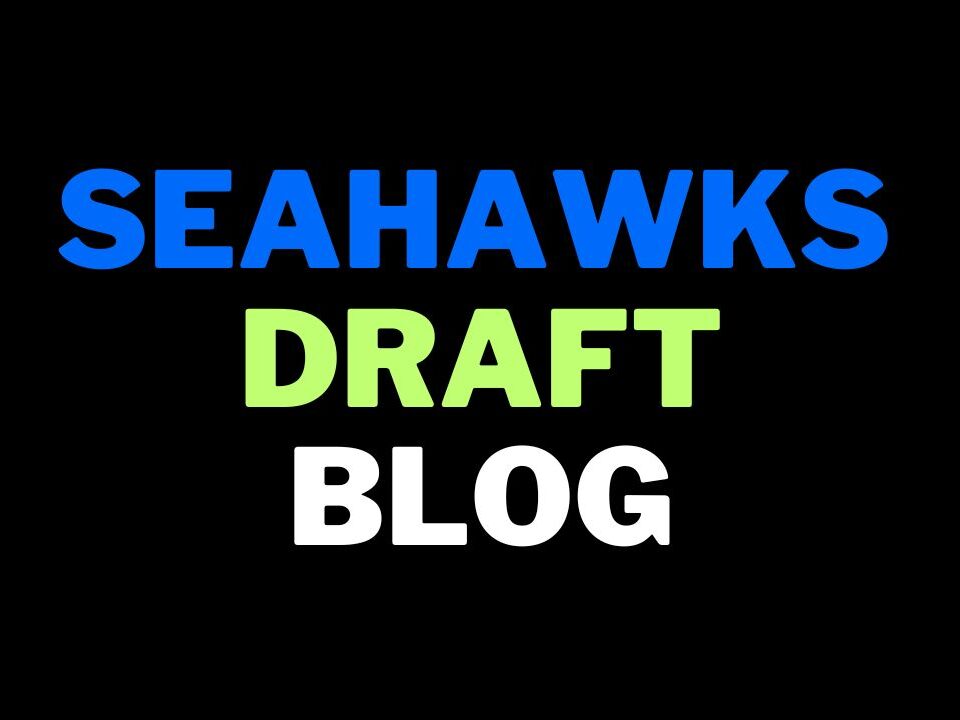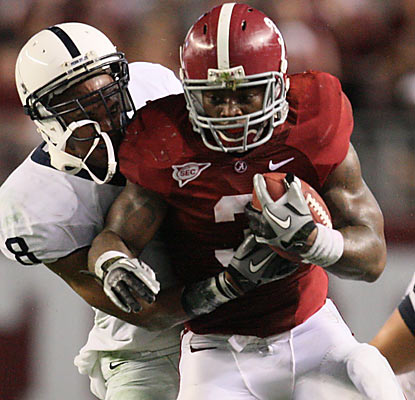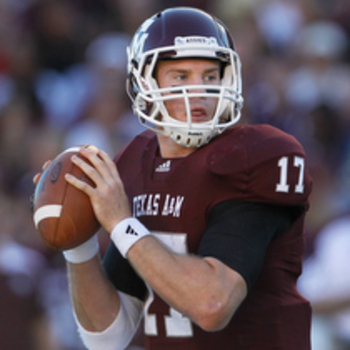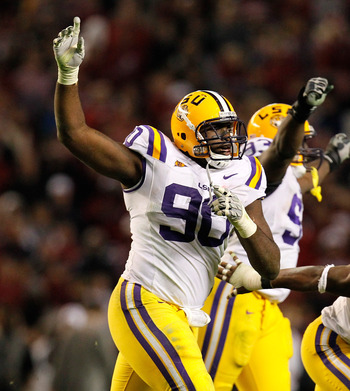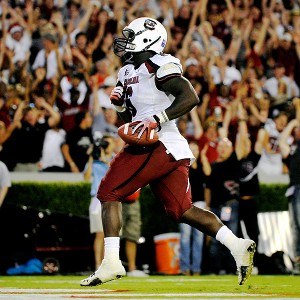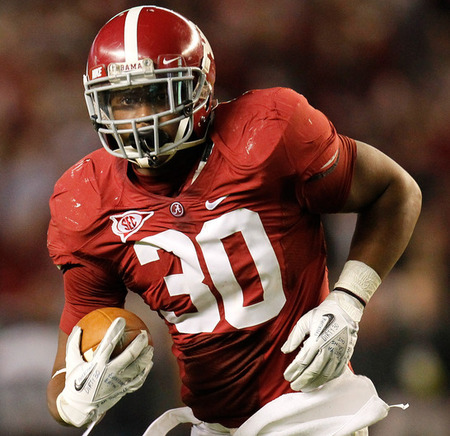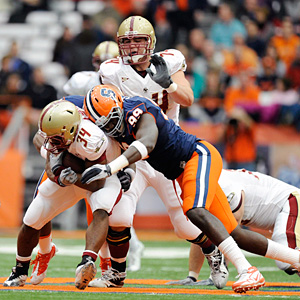
Manning would like two... just like his brother
It seems the hot gossip at the moment has Peyton Manning joining the Seahawks when he’s finally put out of his misery and released by the Colts. Dan Pompei from the National Football Post speculated on the possibility this week, suggesting:
“Based on the buzz around the league, the Seahawks could be the early frontrunner for Peyton Manning, assuming he is released. Pete Carroll needs a quarterback and is believed to have a strong interest in at least exploring Manning. The Seahawks could offer Manning an attractive scenario. They have a young team with some fine skill players to put around him. They play in one of the league’s loudest stadiums. Manning wouldn’t be subject to the same kind of scrutiny in Seattle that he would in a lot of other markets.
“The Seahawks also could have a better feel for Manning’s medical situation than some teams. One of their team physicians, Stan Herring, who also is one of the country’s preeminent specialists for spine injuries. Herring is a member of the NFL’s Head, Neck and Spine Committee.”
Gregg Rosenthal at Pro-Football Talk also touted Manning to Seattle today, noting:
“Seattle isn’t choosing high enough to get Robert Griffin III and they may be too high for Ryan Tannehill. The Seahawks have ties to Matt Flynn and the organizational flexibility to add Manning, even if Manning isn’t healthy enough to sign until later in the offseason.
“We’d argue that signing Manning isn’t a panic move. It’s a big risk that is worth the potential reward for some organizations that need a franchise quarterback — like the Seahawks.”
Manning to Seattle is not an illogical suggestion by any means. The Seahawks do need to upgrade at quarterback and are poorly positioned in the draft to solve this problem. Manning’s strong reputation remains intact despite what will be an acrimonious departure from the franchise he helped build over more than a decade. For years he dragged a mediocre Indianapolis roster into contention and when he finally succumbed to injury, the Colts quickly became the worst team in the NFL. Seattle has a solid young core and having an experienced, proven quarterback would surely help the team improve upon back-to-back 7-9 seasons.
Despite all of that, I’m almost certain Manning won’t be moving to the PNW.
The Seahawks will add a quarterback at some stage during this off season. Charlie Whitehurst is unlikely to be re-signed, leaving Tarvaris Jackson and Josh Portis as the only two recognised quarterbacks on the roster. Although Pete Carroll has spoken warmly of Portis, it still seems a stretch to expect he’s ready to take on full-time back-up duties. Jackson has missed games through injury in the past and it seems unlikely the Seahawks will roll the dice on Portis taking over mid-way through a season if needs must. Adding a veteran will be a priority, if for no other reason than to increase competition. Even if Jackson is the starter again in 2012, the job won’t be handed to him.
I understand there’s a possibility Seattle will be active in the trade market, potentially acquiring a veteran quarterback. Both myself and Kip have touched on this recently and while we cannot offer you any names, it might be worth considering who could be available come March. There are a handful of viable options right now and this front office has been quite cunning to capitalise on cost-effective veteran trades (Marshawn Lynch, Chris Clemons, Leon Washington etc). They could work the magic again to upgrade the quarterback position and build a bridge towards attacking the 2013 draft for a long term successor.
I’m led to believe Manning isn’t the focus and that this is unlikely to change when he eventually becomes available. It might be the hot-topic in the NFL media right now, but Seahawks fans shouldn’t get their hopes up if they’re looking to buy the team’s updated jersey with ‘Manning’ blazed accross the back. I reached out to Scott Enyeart, a beat writer at USC and friend of the blog. He’s very close to several member of the Seahawks coaching staff and previously worked with Pete Carroll. Enyeart has also been pretty vocal on Manning not being a likely target for Seattle. Here’s what he had to say:
“There are a number of reasons I don’t see Manning ending up in Seattle. One being the severity of his injury – even if he gets medically cleared to play in 2012, it’s a long shot to assume he can revert back to his old form and a risk I don’t feel this front office or coaching staff will take. The other reason I don’t think Peyton will become a Seahawk is ‘fit’. Manning’s diva attitude and ego are well documented. Pete Carroll has shown if you can’t buy in, you’re out. Ask T.J. (Houshmandzadeh), Lendale White, etc. Quite honestly, I don’t see Manning being willing to do it Pete’s way.”
The injury situation cannot be ignored and while bringing in Manning isn’t considered by many to be a ‘risk’ – it absolutely will be. Signing Peyton means committing to him as the starter. It may be that come the start of free agency, he can’t even be medically cleared to warrant such a commitment. So what do you do? Wait for the guy to recover and potentially miss out on other targets, or take a wild stab in the dark that he’ll ever be able to make a comeback? Carroll and John Schneider have been nothing but decisive so far and it seems unlikely they’d rely on a recovering Manning or take a punt on his health. If the Seahawks are going to add to the position, they’ll make a move that at least comes with a degree of security that provides instant competition.
Secondly – Enyeart is correct when he says Manning has diva qualities. He’s not a locker room cancer or anything – far from it. But Peyton is only used to getting his own way, and dealing with coaches that allow him to have a lot of control. He won’t get that in Seattle. We’ve seen how Indianapolis collapsed without their quarterback and the Seahawks are not looking to rely on any one individual – not now, not in the future. Of course the situation will be slightly different wherever Manning ends up, but he’s still going to want the offense designed to his strengths and limitations. Given Manning’s stature, he’s well within his rights to expect that. Straight off the bat Seattle’s offense will make a seismic shift – the blocking schemes will have to switch, they may have to investigate bringing in some of Peyton’s receivers (eg, free agents Reggie Wayne or Pierre Garcon) and they’ll have to adjust the playbook.
The Seahawks have been building their offense to suit a certain type of quarterback (mobility, downfield passing, point guard) with a certain type of blocking (zone). Everything is designed to work alongside and enhance the running game in several different ways. That plan would have to be adapted significantly to accomodate Manning on a short term basis. Some fans will, not unfairly, exclaim, “But this is PEYTON MANNING, why wouldn’t you change or adapt?” Changing plans for a highly rated rookie or younger, healthier quarterback is one thing. Changing long term plans for an ageing, injured future Hall-of-famer is quite different. Let’s not forget that this team is being built around youth with a longer term vision in place. They aren’t out to find a quick fix and even if fans are unsatisfied with their work to address the quarterback position so far – let’s not forget the inherited situation was far from ideal. A plan is in place to eventually make Seattle great at quarterback for many years to come, not just for however long Peyton Manning can hold up (if at all).
Pete Carroll has built around slogans such as ‘all-in’ and ‘always compete’ – shunning veterans who haven’t bought in and giving playing time to those who are willing to. It’s created a spark, especially on defense. I cannot imagine Manning or Seattle seeing this as an ideal fit. He won’t want to compete, he won’t want to be a cog in the wheel. In Arizona, Manning would have a coach he knows he can work with, the freedom to shape the offense in his image, an elite receiver target and an offensive line which appears primed to be rebuilt and is more open to design. The Cardinals have some history of installing a veteran in the twighlight of his career and getting results. It’s difficult to look beyond the Cardinals for Peyton, even if Miami and Washington also have legitimate interest.
The Seahawks will look at alternatives and like I mentioned – keep an eye on the trade market. This is where Seahawks fans must focus their attention. I expect the front office to address the position, just not in the way people are talking about right now.
